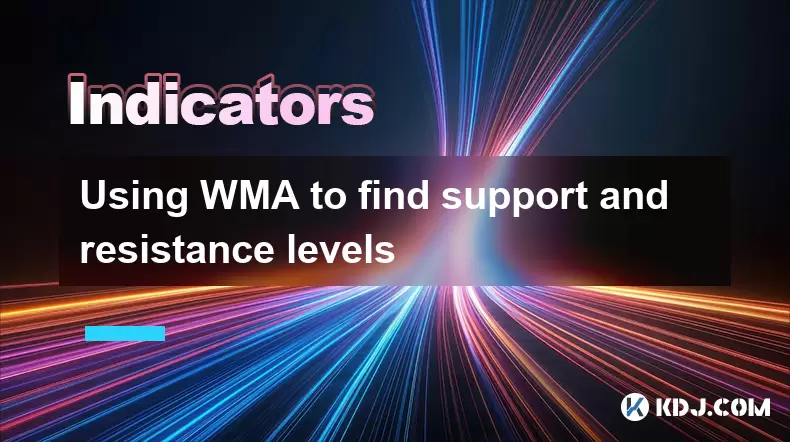-
 Bitcoin
Bitcoin $117,462.8204
-2.03% -
 Ethereum
Ethereum $3,061.1595
1.10% -
 XRP
XRP $2.9139
-2.19% -
 Tether USDt
Tether USDt $1.0002
0.02% -
 BNB
BNB $685.1357
-1.24% -
 Solana
Solana $161.3803
-2.11% -
 USDC
USDC $1.0002
0.04% -
 Dogecoin
Dogecoin $0.1948
-2.92% -
 TRON
TRON $0.2987
-0.89% -
 Cardano
Cardano $0.7330
-1.27% -
 Hyperliquid
Hyperliquid $47.7888
0.13% -
 Stellar
Stellar $0.4514
-2.93% -
 Sui
Sui $4.0169
2.74% -
 Chainlink
Chainlink $15.7088
-2.57% -
 Hedera
Hedera $0.2356
-3.33% -
 Bitcoin Cash
Bitcoin Cash $488.6656
-3.61% -
 Avalanche
Avalanche $21.2955
-1.47% -
 UNUS SED LEO
UNUS SED LEO $9.0415
0.42% -
 Shiba Inu
Shiba Inu $0.0...01332
-0.82% -
 Toncoin
Toncoin $3.0124
-0.62% -
 Litecoin
Litecoin $94.2175
-2.07% -
 Polkadot
Polkadot $4.0011
-0.61% -
 Monero
Monero $333.5714
-3.46% -
 Uniswap
Uniswap $9.1114
-1.56% -
 Dai
Dai $1.0000
0.02% -
 Ethena USDe
Ethena USDe $1.0005
0.00% -
 Bitget Token
Bitget Token $4.4951
1.87% -
 Pepe
Pepe $0.0...01242
0.47% -
 Aave
Aave $321.9943
0.51% -
 Bittensor
Bittensor $434.1984
5.13%
Using WMA to find support and resistance levels
The Weighted Moving Average (WMA) emphasizes recent prices, helping traders identify dynamic support and resistance levels with greater responsiveness.
Jul 11, 2025 at 08:21 am

What Is WMA and How Does It Work?
The Weighted Moving Average (WMA) is a technical analysis tool that gives more weight to recent price data compared to older data points. Unlike the Simple Moving Average (SMA), which treats all prices equally within a specified period, WMA emphasizes newer prices by assigning them higher coefficients. This makes WMA more responsive to recent price changes, allowing traders to identify trends and potential reversal zones more quickly.
To calculate WMA, each closing price in a given period is multiplied by a specific weight factor. These weights are typically assigned in descending order, with the most recent price receiving the highest weight. The sum of these weighted values is then divided by the total of the weight multipliers. For example, in a 5-day WMA, today's closing price would be multiplied by 5, yesterday’s by 4, and so on until the oldest day is multiplied by 1. The result provides a smoothed line that reflects current momentum more accurately than other moving averages.
Why Use WMA for Identifying Support and Resistance?
Traders often rely on moving averages as dynamic support and resistance levels, and WMA enhances this capability due to its sensitivity to recent price action. When prices approach a rising WMA, it can act as a support level, suggesting potential buying interest. Conversely, when prices near a falling WMA, it may serve as a resistance level, signaling possible selling pressure.
Because WMA reacts faster to price changes, it allows traders to spot potential turning points earlier than slower-moving indicators like SMA. This responsiveness becomes especially valuable in volatile cryptocurrency markets where rapid shifts in sentiment can create sharp reversals or breakouts.
Additionally, combining WMA with other tools such as candlestick patterns or volume indicators can improve the accuracy of identifying key support and resistance zones. Traders can also use multiple WMA lines (e.g., 20-period and 50-period) to confirm stronger levels where both lines converge, increasing confidence in trade setups.
Setting Up WMA on Trading Platforms
Most modern trading platforms, including TradingView, Binance, and MetaTrader, allow users to apply WMA directly to their charts. To add WMA:
- Open your preferred charting platform.
- Navigate to the indicators or studies section.
- Search for "Weighted Moving Average" or "WMA".
- Select the desired period (common choices include 9, 20, 50, or 100).
- Adjust the color and thickness for better visibility.
- Apply the indicator to the chart.
Once applied, observe how price interacts with the WMA line over time. In uptrends, WMA often acts as a support zone during pullbacks. During downtrends, WMA can function as a resistance area during bounces. These observations help traders anticipate where price might reverse or continue its trend.
For crypto traders, testing WMA across different timeframes—such as 1-hour, 4-hour, or daily charts—can reveal significant support and resistance levels that align with broader market structures.
Interpreting WMA Crossovers and Divergences
A WMA crossover strategy involves using two WMA lines of different periods to detect shifts in trend direction. For instance, a short-term WMA crossing above a long-term WMA could indicate upward momentum, while a cross below might suggest downward pressure. These crossovers can highlight areas where support or resistance might shift.
Divergences between WMA and price movement are also crucial. If the price continues to rise but WMA starts flattening or declining, it may signal weakening momentum and an upcoming reversal. Similarly, if the price falls but WMA begins to stabilize or rise, it could point to emerging support at lower levels.
Traders should pay attention to how price reacts around these crossover points. A strong rejection at a WMA level can reinforce its role as either support or resistance. Candlestick formations like hammers or shooting stars appearing near WMA lines can further validate these levels.
Combining WMA with Other Technical Tools
Using WMA in isolation may not provide sufficient confirmation for high-probability trades. Therefore, many traders combine it with Fibonacci retracement levels, trendlines, or volume oscillators to strengthen their analysis.
- Overlay Fibonacci levels to find confluence zones where WMA and Fibonacci intersect.
- Draw horizontal support/resistance lines and check if they align with WMA levels.
- Monitor volume spikes or drops when price approaches WMA to gauge strength behind moves.
For example, if a cryptocurrency’s price reaches a key Fibonacci retracement level and also touches a rising WMA, the combined confluence increases the likelihood that this level will hold as support. Similarly, if a bearish candlestick pattern forms near a downward-sloping WMA and coincides with a previous resistance zone, it strengthens the case for a valid resistance level.
Such combinations enhance decision-making by reducing false signals and improving timing for entries and exits.
Frequently Asked Questions (FAQs)
What timeframe works best for WMA in crypto trading?
While there’s no one-size-fits-all answer, many traders use WMA on 1-hour or 4-hour charts for intraday trading and daily charts for swing trading. Shorter timeframes offer more signals but may contain noise, while longer timeframes provide clearer, though less frequent, support and resistance levels.
Can WMA be used for scalping strategies?
Yes, WMA is suitable for scalping, especially when paired with shorter periods like 5 or 9. Scalpers often look for quick bounces off WMA lines in trending markets to enter trades with tight stop-losses and small profit targets.
How does WMA differ from EMA in identifying support and resistance?
Both WMA and EMA emphasize recent prices, but WMA assigns linearly decreasing weights to past data, while EMA uses exponential decay. As a result, WMA responds slightly differently to price fluctuations, making it a unique tool for spotting dynamic support and resistance.
Is WMA reliable in sideways or ranging markets?
In ranging conditions, WMA may produce false signals since prices bounce between defined support and resistance without clear trends. However, traders can still use WMA in combination with horizontal levels or oscillators to filter out noise and focus on meaningful interactions.
Disclaimer:info@kdj.com
The information provided is not trading advice. kdj.com does not assume any responsibility for any investments made based on the information provided in this article. Cryptocurrencies are highly volatile and it is highly recommended that you invest with caution after thorough research!
If you believe that the content used on this website infringes your copyright, please contact us immediately (info@kdj.com) and we will delete it promptly.
- GameStop, Bitcoin, and the Inflation Hedge: A New York Perspective
- 2025-07-16 08:30:12
- Solana Memecoins Hit the Big Time: PUMP and Sonic Get Coinbase Listing Boost!
- 2025-07-16 06:50:12
- Core Foundation's Rev+: Fueling Ecosystem Growth Through Revenue Sharing
- 2025-07-16 06:30:17
- Ripple, California, and Collaboration: A New Era for Crypto?
- 2025-07-16 06:30:17
- Uniswap, Mary-Catherine Lader, and the DeFi Evolution: What's Next?
- 2025-07-16 07:10:12
- Roman Storm, DPRK Hackers, and Prosecutors: A Tangled Web
- 2025-07-16 06:50:12
Related knowledge

Advanced RSI strategies for crypto
Jul 13,2025 at 11:01am
Understanding the Basics of RSI in Cryptocurrency TradingThe Relative Strength Index (RSI) is a momentum oscillator used to measure the speed and chan...

Crypto RSI for day trading
Jul 12,2025 at 11:14am
Understanding RSI in the Context of Cryptocurrency TradingThe Relative Strength Index (RSI) is a momentum oscillator used to measure the speed and cha...

Crypto RSI for scalping
Jul 12,2025 at 11:00pm
Understanding RSI in the Context of Crypto TradingThe Relative Strength Index (RSI) is a momentum oscillator widely used by traders to measure the spe...

What does an RSI of 30 mean in crypto
Jul 15,2025 at 07:07pm
Understanding RSI in Cryptocurrency TradingRelative Strength Index (RSI) is a momentum oscillator widely used in cryptocurrency trading to measure the...

What does an RSI of 70 mean in crypto
Jul 13,2025 at 06:07pm
Understanding the RSI Indicator in Cryptocurrency TradingThe Relative Strength Index (RSI) is a widely used technical analysis tool that helps traders...

How to avoid RSI false signals in crypto
Jul 13,2025 at 06:21pm
Understanding RSI and Its Role in Crypto TradingThe Relative Strength Index (RSI) is a momentum oscillator used to measure the speed and change of pri...

Advanced RSI strategies for crypto
Jul 13,2025 at 11:01am
Understanding the Basics of RSI in Cryptocurrency TradingThe Relative Strength Index (RSI) is a momentum oscillator used to measure the speed and chan...

Crypto RSI for day trading
Jul 12,2025 at 11:14am
Understanding RSI in the Context of Cryptocurrency TradingThe Relative Strength Index (RSI) is a momentum oscillator used to measure the speed and cha...

Crypto RSI for scalping
Jul 12,2025 at 11:00pm
Understanding RSI in the Context of Crypto TradingThe Relative Strength Index (RSI) is a momentum oscillator widely used by traders to measure the spe...

What does an RSI of 30 mean in crypto
Jul 15,2025 at 07:07pm
Understanding RSI in Cryptocurrency TradingRelative Strength Index (RSI) is a momentum oscillator widely used in cryptocurrency trading to measure the...

What does an RSI of 70 mean in crypto
Jul 13,2025 at 06:07pm
Understanding the RSI Indicator in Cryptocurrency TradingThe Relative Strength Index (RSI) is a widely used technical analysis tool that helps traders...

How to avoid RSI false signals in crypto
Jul 13,2025 at 06:21pm
Understanding RSI and Its Role in Crypto TradingThe Relative Strength Index (RSI) is a momentum oscillator used to measure the speed and change of pri...
See all articles

























































































